Boxed set contains
• ECAT Manual
• ECAT Cue Card Pack
• ECAT Assessment Forms
• CD-ROM (of reproducible forms and cards)
As communication skills decline in people with dementia, a supportive environment becomes crucial to a resident’s ability to express needs and desires. But how do you recognize what physical and social changes will help improve functioning, communication, and quality of life? The Environment & Communication Assessment Toolkit (ECAT) for Dementia Care is your answer!
This evidence-based toolkit includes the tools you need to assess, intervene, and modify on an individualized basis to ensure the quality of life for people with dementia. Use the validated Assessment Forms, and in three easy-to-follow steps you will:
- Assess activity performance with quick yes/no questions
- Evaluate the environment to identify barriers and problems
- Pinpoint individualized recommendations for intervention
And it’s not only person-centered but real-world! ECAT’s developers are researchers and experienced clinicians who have made sure that ECAT:
- Integrates effortlessly into evaluation and treatment sessions
- Helps keep up case load demands with creative solutions
- Satisfies regulatory requirements
- Leads to straightforward functional therapeutic interventions
- Identifies low-cost, person-centered environmental modifications
In field-tests, 97% of professionals using ECAT reported it gave them new treatment options to use with clients with dementia. Discover for yourself the surprisingly simple environmental changes that can improve functional independence and resident well-being—changes such as supporting bathroom independence by increasing the size of sign lettering to identify spaces and using colored tape around a door handle, or encouraging social interaction by rearranging seating areas.
ECAT for Dementia Care has more than 300 specific recommendations for interventions and modifications that will reduce typical problems encountered during routine activities of daily living for people with dementia. With the ECAT’s functionally based assessment and intervention system, you’re equipped with solutions!

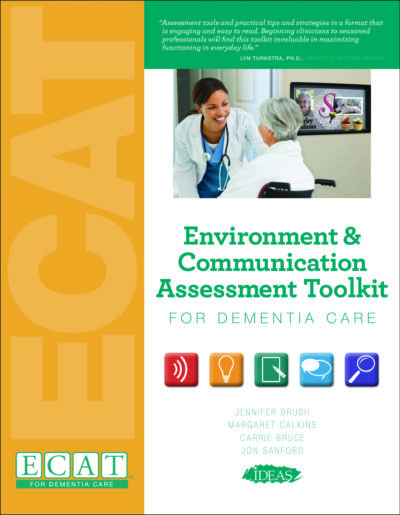
 Jennifer Brush, MA, CCC-SLP, is the Director of Brush Development, USA and the Program Director, Montessori Education for Dementia, St. Nicholas Montessori College, Dun Laoghaire, Ireland. Jennifer serves on the Association Montessori Internationale (AMI) Advisory Board for Montessori for Aging and Dementia, and she is the only AMI Certified Trainer of Trainers for Montessori for Aging and Dementia in the US. Jennifer is the co-author of several nationally recognized books on dementia.
Understanding the particular needs of healthcare organizations and families engaged in dementia care she brings more than 20 years of experience as both a leading researcher and direct-care coach in this complex field. She is a nationally recognized speech-language pathologist known for her work in the areas of memory and environmental interventions for people with dementia. She has served as the principal investigator on applied research grants that examined issues pertaining to HIV/AIDS dementia, hearing impairment, dining, swallowing disorders, and the long-term care environment. Ms. Brush has served as Chair of the Professional Development Committee of the American Speech-Language Hearing Association Gerontology Special Interest Division and on the Editorial Review Board of
Jennifer Brush, MA, CCC-SLP, is the Director of Brush Development, USA and the Program Director, Montessori Education for Dementia, St. Nicholas Montessori College, Dun Laoghaire, Ireland. Jennifer serves on the Association Montessori Internationale (AMI) Advisory Board for Montessori for Aging and Dementia, and she is the only AMI Certified Trainer of Trainers for Montessori for Aging and Dementia in the US. Jennifer is the co-author of several nationally recognized books on dementia.
Understanding the particular needs of healthcare organizations and families engaged in dementia care she brings more than 20 years of experience as both a leading researcher and direct-care coach in this complex field. She is a nationally recognized speech-language pathologist known for her work in the areas of memory and environmental interventions for people with dementia. She has served as the principal investigator on applied research grants that examined issues pertaining to HIV/AIDS dementia, hearing impairment, dining, swallowing disorders, and the long-term care environment. Ms. Brush has served as Chair of the Professional Development Committee of the American Speech-Language Hearing Association Gerontology Special Interest Division and on the Editorial Review Board of 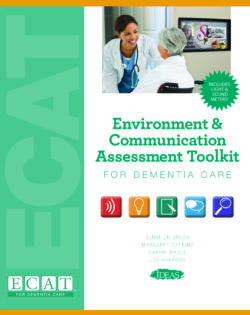

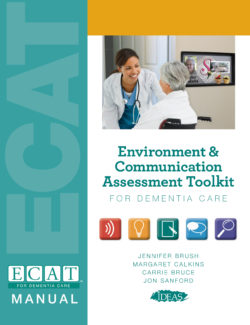
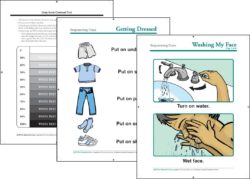
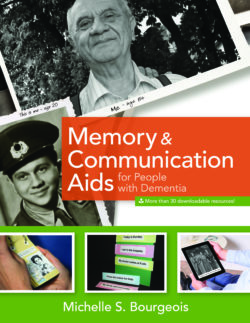
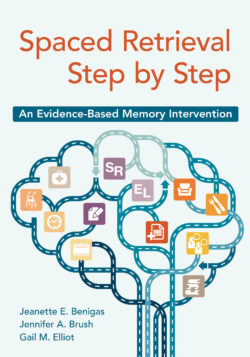
admin –
“A unique resource for health professionals who work with individuals with dementia. It combines content information, assessment tools, and practical tips and strategies in a format that is engaging and easy to read. Everyone from beginning clinicians to seasoned professionals will find this manual invaluable in managing patients with dementia and maximizing their functioning in everyday life.”
—Dr. Lyn Turkstra, Associate Professor, Department of Communicative Disorders, University of Wisconsin-Madison
admin –
“[Here are] the long overdue tools needed by speech-language pathologists to determine the appropriate environmental cues for their clients with dementia to maintain a quality life in the nursing home. Thank you for this excellent resource.”
—Michelle Bourgeois, PhD, Professor, Department of Speech and Hearing Science, The Ohio State University
admin –
“This toolkit is a must have, foundational resource for personalizing the environment while cultivating the possibilities that exist for human growth and meaningful relationships in dementia care settings.
—Heidi Gil, Senior Director of Continuing Care, Planetree
admin –
“In one woman’s bathroom, we added contrasting colors … Prior to this $10 modification of buying new towels and using blue paper, she would use her hand towel for toileting hygiene AND wiping her hands and face. It was a HUGE hygiene issue. Now she demonstrates great hygiene without cuing!!! SUCCESS!!”
admin –
“One patient … began struggling more with pathfinding to her apartment … I took her shopping on an activities outing and had her pick out the color of flowers she would like to hang … [Now] she can independently recall what color to look for when asked. It has definitely increased her success with pathfinding, especially since she picked a color that is meaningful to her.”
admin –
“A patient was eating in his room, as he was unable to distinguish between jeans and slacks [no jeans are allowed in our dining room]. Re-arranging his closet with sections for day and for evening attire allowed him to dress appropriately and go to the dining room in the evening. It made a positive impact on his psychosocial wellbeing.”